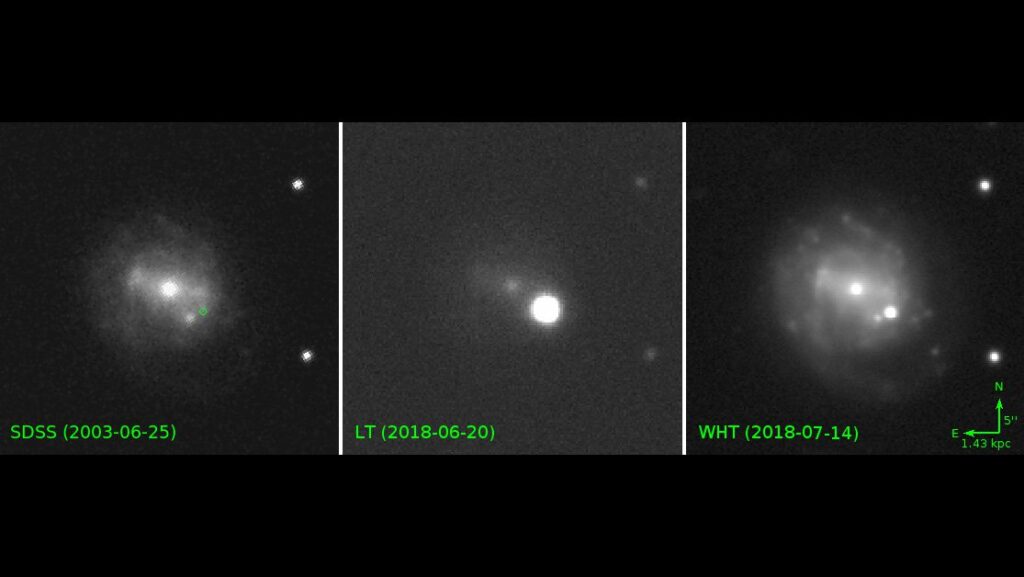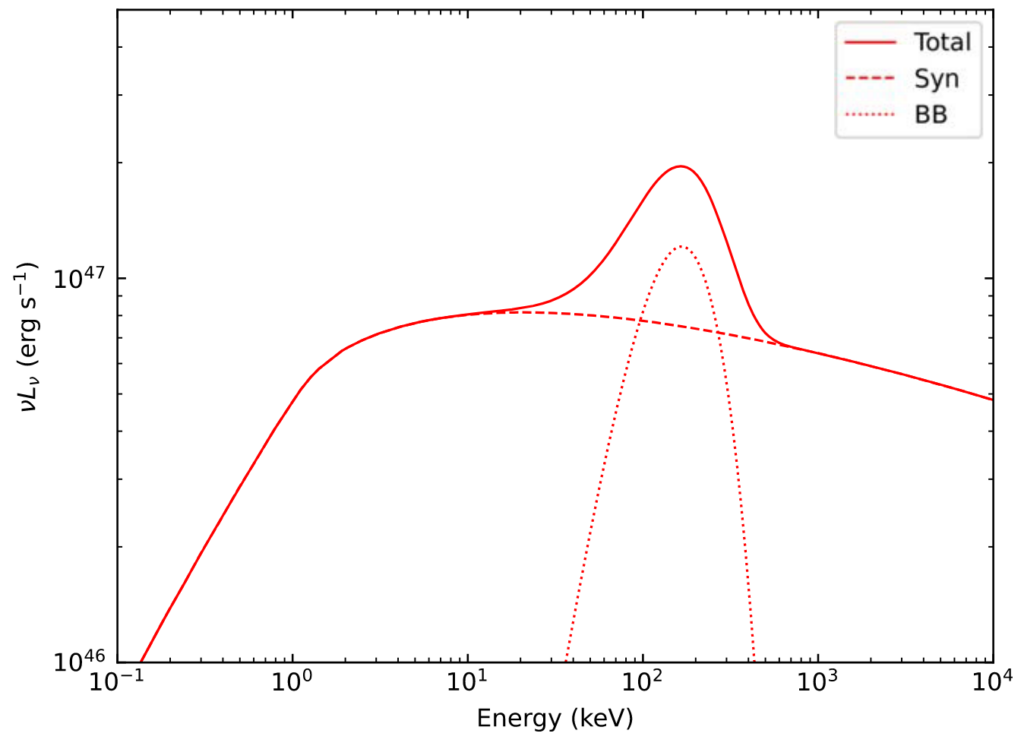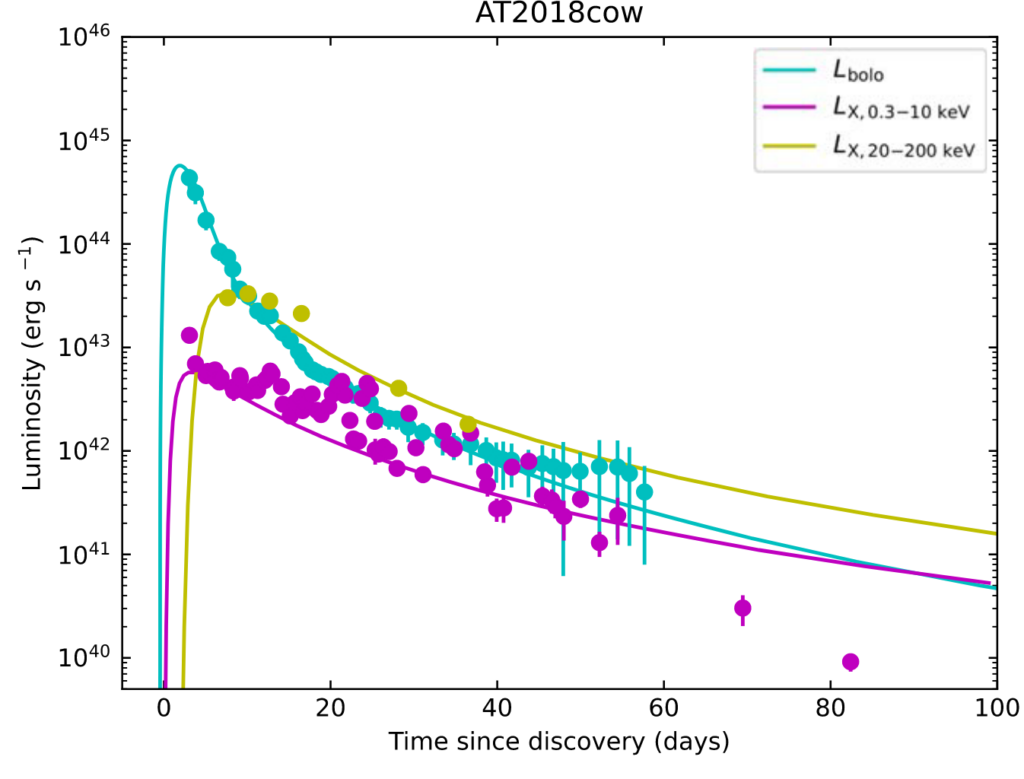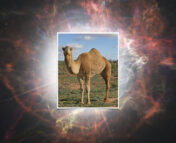Title: Magnetar as the Central Engine of AT2018cow: Optical, Soft X-Ray, and Hard X-Ray Emission
Authors: Long Li, Shu-Qing Zhong, Di Xiao, Zi-Gao Dai, Shi-Feng Huang, and Zhen-Feng Sheng
First Author’s Institution: Department of Astronomy, University of Science and Technology of China, Hefei
Status: Published in The Astrophysical Journal Letters [open access]

Over the past decade, several efforts to rapidly image the entire night sky on an approximately nightly basis have resulted in many unexpected discoveries. Several surveys, such as those of PTF, iPTF, ZTF, and ATLAS, have contributed to the ever-expanding and diverse transient zoo. Given this cadence and relatively shallow depth, these surveys have identified several classes of bright and fast transients. One of which remains unexplained is called Luminous Fast Blue Optical Transient (often abbreviated as LFBOT or FBOT).
Although several FBOTs have been identified over the last decade, such as CSS161010 in 2016, this class of optical transient was largely overlooked due to their rarity until AT2018cow, AKA “The Cow” was discovered by the ATLAS facility in 2018. You can read about its discovery in this Astrobite! “The Cow” occurred in a relatively nearby galaxy at only 66 Mpc (~200 million lightyears), and it was extremely bright, evolved quickly, and had a largely featureless, blue optical spectrum. The X-ray and optical spectra and light curves of AT2018cow did not align well with any models for known transients, leading to a slew of multi-wavelength observations in an attempt to uncover its origin. Since then, numerous theories have been proposed about the origin of FBOTs. However, there are some challenges since observations of a more recent FBOT, AT2023fhn A.K.A. “The Finch” has indicated that all FBOTs might not come from the same underlying astrophysical object, as discussed in this Astrobite! Despite this, the authors of today’s paper have tackled this challenge and proposed a new explanation for “The Cow.”
Meet the Central Engine
The authors of today’s paper are interested in creating a model that can explain the optical and X-ray properties of AT2018cow. Although there are many explanations currently in the literature, the authors are specifically interested in investigating the newborn magnetar scenario using a “two-zone” model. A magnetar is a highly magnetized pulsar, a type of neutron star born from the deaths of massive stars in supernovae.
In the first zone of the two-zone model, the magnetar has a Poynting-flux-dominated wind. This effect means the wind is highly magnetized and carries magnetic energy away from the magnetar. As the wind expands, magnetic dissipation converts magnetic energy into kinetic energy of the wind’s particles by reconnecting magnetic field lines. The particles in the wind gain so much kinetic energy that they become relativistic (travel near the speed of light). The electrons in the magnetar’s wind are charged, so they accelerate. They also interact with the magnetic field via the Lorentz force, which causes them to spiral around magnetic field lines and radiate away energy. This emission process is called synchrotron radiation.
The second zone the model considers is bulk material ejected external to the magnetar’s wind. The critical distinction between previous methods and today’s paper is the inclusion of interaction between the emission from the magnetar’s wind and this ejecta. The authors assume that the ejected material is made of 20% hydrogen, 10% helium, and 70% oxygen to compute the opacity of the ejecta, which is vital to determine what the resulting emission visible to us is from the interaction of the wind’s radiation with the ejecta.
The authors of today’s paper also calculate the emission from the ejecta heated by the wind’s radiation under the assumption that the radioactive decay of Cobalt-56 and Nickel-56 isotopes add energy to the ejecta. These isotopes are thought to contribute power to the optical emission from Type 1a supernovae. Initially, the core of the collapsing star is composed chiefly of Nickel-56 that is ejected in the supernova, which goes on to decay to Cobalt-56 and then finally to Iron-56, radiating energy away that is absorbed and re-radiated by the ejecta as optical emission that we observe.
When adding all these contributions, the authors can predict the time evolution of the optical and X-ray emission that one might observe from such a system. The authors show an example of the spectrum from this system in Figure 1.

How Does a “Young, Windy Magnetar Cow” Look?
Using their model, the authors compiled the optical and X-ray observations of AT2018cow and compared them with their predictions. The optical and X-ray light curves are shown in Figure 2, and the X-ray spectra are shown in Figure 3. The optical data aligns quite nicely until about 50 days, and the X-ray spectra at early (7 days) and late (46 days) fit well.

Although the model appears to explain some of the optical and X-ray properties of AT2018cow, the authors note some important differences that require further investigation. For example, the sudden drop in X-ray luminosity at ~50 days in Figure 2 could be explained by the eventual collapse of the magnetar into a black hole. This situation could happen if the magnetar were initially spinning at a high velocity. Then, as it “spun down” and lost its energy to the magnetar wind, it would slow down enough that the centrifugal force of the rotation plus the neutron degeneracy pressure could not hold the magnetar up against gravity anymore, leading to its collapse. Upon collapse, the wind would no longer be available as a source of energy to cause X-ray emission.

This scenario is an attractive explanation of an exotic phenomenon. Still, it has an important problem: given the best-fitting model parameters, the magnetar’s mass must be fine-tuned to within one ten-thousandth of the postulated maximum neutron star mass. Given this, that scenario for the late-time drop in X-ray flux is unlikely, and this model likely requires additional modifications to explain all of the properties of AT2018cow. However, given its success with the optical and X-ray properties at early time, further investigation into central-engine-powered models for AT2018cow and other FBOTs is necessary to uncover the true origin of these unique transients.
Astrobite edited by Sonja Panjkov
Featured Image Credit: Daniel Perley, Liverpool John Moores University




